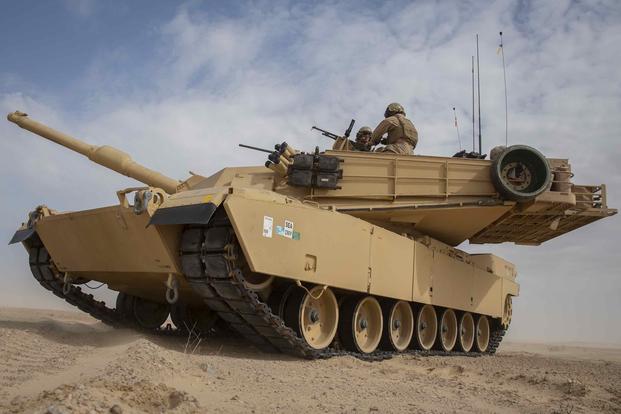In the next decade, the Marine Corps will no longer operate tanks or have law enforcement battalions. It will also have three fewer infantry units and will shed about 7% of its overall force as the service prepares for a potential face-off with China.
The Marine Corps is cutting all military occupational specialties associated with tank battalions, law enforcement units and bridging companies, the service announced Monday. It's also reducing its number of infantry battalions from 24 to 21 and cutting tiltrotor, attack and heavy-lift aviation squadrons.
The changes are the result of a sweeping months-long review and war-gaming experiments that laid out the force the service will need by 2030. Commandant Gen. David Berger directed the review, which he has called his No. 1 priority as the service's top general.
"Developing a force that incorporates emerging technologies and a significant change to force structure within our current resource constraints will require the Marine Corps to become smaller and remove legacy capabilities," a news release announcing the changes states.
By 2030, the Marine Corps will drop down to an end strength of 170,000 personnel. That's about 16,000 fewer leathernecks than it has today.
Related: The Marine Corps Must Get Smaller to Get Better, Commandant Says
Cost savings associated with trimming the ranks will pay for a 300% increase in rocket artillery capabilities, anti-ship missiles, unmanned systems and other high-tech equipment leaders say Marines will need to take on threats such as China or Russia.
"The Marine Corps is redesigning the 2030 force for naval expeditionary warfare in actively contested spaces," the announcement states.
Units and squadrons that will be deactivated under plan include:
- 3rd Battalion, 8th Marines
- Marine Medium Tiltrotor Squadron 264
- Marine Heavy Helicopter Squadron 462
- Marine Light Attack Helicopter Squadron 469
- Marine Wing Support Groups 27 and 37
- 8th Marine Regiment Headquarters Company.
The 8th Marine Regiment's other units -- 1/8 and 2/8 -- will be absorbed by other commands. Second Marines will take on 1/8, and 2/8 will go to the 6th Marine Regiment.
Artillery cannon batteries will fall from 21 today to five. Amphibious vehicle companies will drop from six to four.
The Hawaii-based Marine Light Attack Helicopter Squadron 367, which flies AH-1Z and UH-1Y aircraft, will also be deactivated and relocated to Camp Pendleton, California, the release states.
And plans to reactivate 5th Battalion, 10th Marines, as a precision rocket artillery system unit are also being scrapped. That unit's assigned batteries will instead realign under 10th Marines, according to the release.
"The future Fleet Marine Force requires a transformation from a legacy force to a modernized force with new organic capabilities," it adds. "The FMF in 2030 will allow the Navy and Marine Corps to restore the strategic initiative and to define the future of maritime conflict by capitalizing on new capabilities to deter conflict and dominate inside the enemy's weapon engagement zone."
Existing infantry units are going to get smaller and lighter, according to the plan, "to support naval expeditionary warfare, and built to facilitate distributed and Expeditionary Advanced Base Operations."
The Marine Corps will also create three littoral regiments that are organized, trained and equipped to handle sea denial and control missions. The news release describes the new units as a "Pacific posture." Marine expeditionary units, which deploy on Navy ships, will augment those new regiments, the release adds.
In addition to more unmanned systems and long-range fire capabilities, the Marine Corps also wants a new light amphibious warship and will invest in signature management, electronic warfare and other systems that will allow Marines to operate from "minimally developed locations."
Berger has called China's buildup in the South China Sea and Asia-Pacific region a game changer for the Navy and Marine Corps. He has pushed for closer integration between the sea services, as the fight shifts away from insurgent groups in the Middle East and to new threats at sea.
Marine officials say they will continue evaluating and war-gaming the service's force design.
“Our force design initiatives are designed to create and maintain a competitive edge against tireless and continuously changing peer adversaries,” the release states.
-- Gina Harkins can be reached at gina.harkins@military.com. Follow her on Twitter @ginaaharkins.
Read more: Top Marine General Wants a New Class of 'Light' Amphibious Warship












